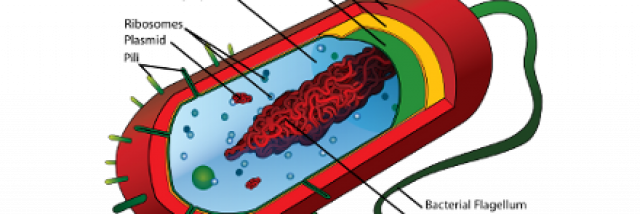Publicerad: 2009-12-27

The theory of evolution, which would have required ready made self-replicating cells in order to even begin, gets further trouble with the results from a new study
The theory of evolution, which claims that all animals and plants were derived from a single initial cell, is thought to be driven by mutations and natural selection. Today it is known that these mechanisms to the contrary make the animals and plants constantly degenerating (the opposite of evolution) because harmful mutations accumulate so rapidly that natural selection is unable to clear them away in time.1
On top of all, mutations and natural selection - no matter which way they operate - can only operate where there is already a self-replicating organism. Evolution - if it would work - could not even begin before biology already exists! An insolvable chicken-or-egg problem, that is.
A group of researchers now have tried to find out more precisely how sophisticated the first such self-replicating cell would have had to be.2 They examined one of the very smallest organisms known, disregarded those who need the help of other organisms to survive and reproduce (such as viruses). The results were published in the prestigious scientific journal Science.
The survey was conducted in three main types of molecules in the cell in order to cover as much as possible of cellular functionality. From all three studies, the result was the same: A minimal (ie, with only the most necessary components) cell must be more complex than what was previously thought.
Among other things, it was discovered that proteins (molecular "machines" that carry all sorts of duties in the cell) often have more than one function simultaneously. This gives huge problems to the theory of evolution because mutations that are considered to improve the protein for a particular task, would most certainly degrade it for another task. It becomes an impossible equation.
Furthermore, it was discovered that the cell usually links processes that occur in succession one after another into a single machinery (much like when adding machines one after another in a continuous band factory). This gives a similar problem as above, because each protein then has to be constructed both to fit into the machinery, and to perform it's normal funcion. It becomes therefore particularly difficult to explain how these proteins could have arisen through a step-by-step evolution, since many vastly improbable things would have to happen simultaneously.
In summary, the new study makes it even more unreasonable to believe in the evolution of today's plants and animals from a single initial cell. On the other hand, the results fit well with the Bible's data about ready-made, separate kinds of plants and animals, within which variation can happen, within a given boundaries ("after their kinds", as the Bible puts it).
Samuel Lampa
RIL News
Sources
Footnote: In the article it is mentioned that the studied organism is extremely flexible and evolvable. This has, however, nothing to do with evolution in its ordinary sense (going from simple to ,ore complex). To the contrary, it is a strong argument against evolution that organisms continue to be the same type of organism, year after year, despite a big opportunity for variation and adaptation (within given boundaries, or "after their kind" as the Bible puts it). In bacteria evolution would, if it existed, be hundreds of times faster than in humans (their reproductive rate is counted in minutes rather than years), still bacteria continue being just that, bacteria!
Edit (30/12 2009): Added reference (another article on same subject)